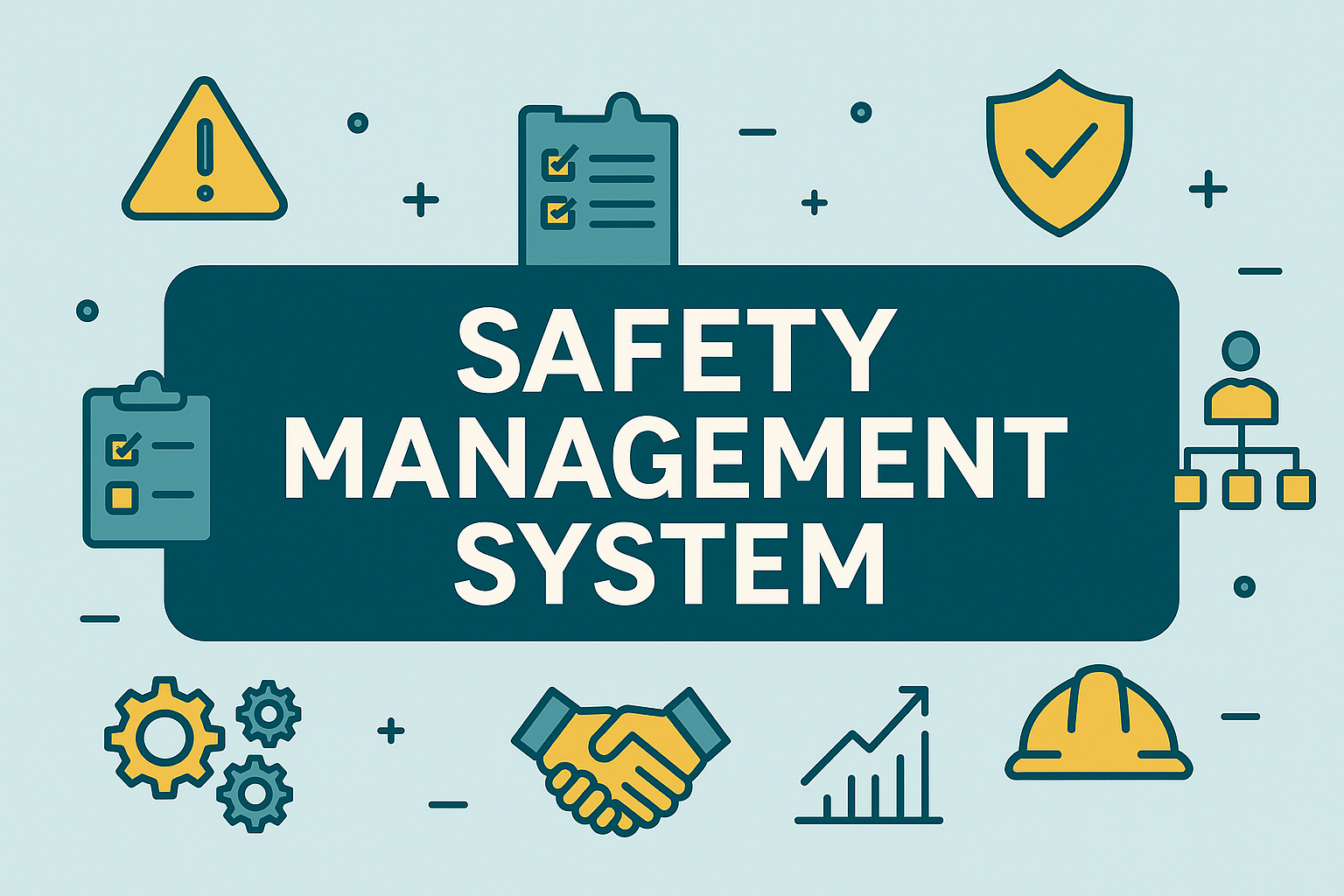Implementing a Safety Management System (SMS) is one of the most effective ways to build a strong safety culture, ensure legal compliance, and prevent workplace incidents.
Whether you’re starting from scratch or upgrading your current OHSE practices, having a structured system can streamline responsibilities, reduce risks, and promote continuous improvement.

At the heart of any robust OHSE program, an SMS provides a framework of policies, processes, and procedures designed to identify, control, and mitigate health and safety risks.
In this step-by-step guide, we’ll walk through how to successfully implement a Safety Management System that aligns with both regulatory expectations and your organization’s operational needs.
What Is a Safety Management System (SMS)?
A Safety Management System is a formal, organized approach to managing safety risks. It includes clearly defined policies, accountability structures, procedures for hazard identification, and processes for continual monitoring and improvement.
Key goals of an SMS include:
- Preventing accidents and injuries
- Promoting compliance with legal and regulatory requirements
- Engaging employees in safety responsibilities
- Creating a cycle of continuous safety performance improvement
Many industries, including aviation, construction, mining, and manufacturing, rely on SMS to meet safety standards set by organizations like OSHA and CCOHS.
Why Implement a Safety Management System?
Before we dive into the how-to, it’s worth reviewing the benefits of SMS implementation:
- Risk Reduction: Proactively identify hazards before they cause harm
- Compliance Assurance: Meet legislative and regulatory requirements
- Consistency: Standardize safety processes across departments
- Accountability: Clearly define roles and responsibilities
- Efficiency: Reduce downtime and incident-related costs
- Continuous Improvement: Use data to evolve and improve safety efforts

Step-by-Step Guide to Implementing a Safety Management System
✅ Step 1: Gain Leadership Commitment
Successful implementation begins at the top. Senior management must demonstrate visible support for safety initiatives. Allocate budget, resources, and time for planning, training, and communication.
Key Actions:
- Draft a clear safety policy endorsed by leadership
- Appoint safety officers or assign SMS responsibilities
- Set measurable safety goals
Internal link: Learn more from our article on Building a Proactive Safety Culture
✅ Step 2: Assess Current Safety Practices
Conduct a gap analysis to compare your current safety activities with best practices. This will highlight strengths, weaknesses, and areas requiring improvement.
Use tools like:
- Safety audits
- Hazard assessments
- Employee interviews
- Regulatory compliance reviews
✅ Step 3: Define the Scope and Structure of the SMS
Determine the boundaries of your SMS—what sites, processes, and personnel it covers.
Structure the system around key elements such as:
- Safety policies and objectives
- Risk management protocols
- Training and competence
- Incident investigation and reporting
- Emergency preparedness
Use frameworks like ISO 45001 or ANSI Z10 as guides.
✅ Step 4: Develop Safety Policies and Procedures
Create or update written procedures that define safe practices, roles, and expectations for every task.
Examples include:
- Lockout/Tagout procedures
- PPE usage protocols
- Confined space entry procedures
- Hazard communication systems (e.g., WHMIS in Canada)
Make sure documents are accessible, readable, and frequently reviewed.
✅ Step 5: Identify and Assess Hazards
Use Job Hazard Analysis (JHA) and Risk Assessment tools to identify potential hazards and evaluate risk levels.
Prioritize risks using a matrix that considers:
- Likelihood of occurrence
- Severity of potential harm
- Existing controls
Then determine the best control measures:
Elimination → Substitution → Engineering Controls → Administrative Controls → PPE
✅ Step 6: Implement Risk Controls
Based on your assessments, implement appropriate controls to mitigate risks. This could involve:
- Installing guards on machinery
- Introducing ergonomic workstations
- Setting safe work limits (e.g., lifting loads)
- Revising shift schedules to prevent fatigue
Ensure all workers are trained on the new controls and understand their importance.
✅ Step 7: Train and Engage Employees
Safety training is not a one-time event. Develop a schedule for:
- New employee orientation
- Regular refresher courses
- Specific training for hazardous tasks
Encourage active participation through safety committees, suggestion programs, and hazard reporting tools.
Include training on:
- Incident reporting
- Emergency procedures
- Equipment operation
- Workplace ergonomics
✅ Step 8: Monitor and Measure Performance
Tracking performance helps determine if your SMS is effective. Use leading and lagging indicators, such as:
- Number of hazards reported
- Training completion rates
- Near-miss events
- Lost-time injury frequency
Use digital dashboards and reports to share results and drive improvements.
✅ Step 9: Conduct Incident Investigations
Every incident—no matter how minor—should be documented and investigated.
Follow a root cause analysis method such as:
- 5 Whys
- Fishbone Diagram
- Fault Tree Analysis
Record findings, implement corrective actions, and ensure feedback loops to prevent recurrence.
✅ Step 10: Review and Improve Continuously
An SMS is a living system. Conduct periodic reviews to refine processes based on:
- New technologies
- Updated regulations
- Organizational changes
- Lessons learned from audits or incidents
Hold annual management reviews to align safety objectives with organizational goals.
Common Mistakes to Avoid
- Implementing SMS as a “paper exercise” without field application
- Failing to train frontline supervisors adequately
- Overcomplicating documentation
- Lack of employee engagement
- Ignoring feedback and failing to close the loop
Real-World Example
A logistics company in Toronto introduced an SMS following multiple forklift incidents. After implementing hazard identification processes, structured training, and monthly safety audits:
- Incident frequency dropped by 55% in the first year
- Insurance premiums decreased
- Worker engagement in safety committees increased by 60%
Conclusion: A System That Protects and Performs
Implementing a Safety Management System (SMS) is more than a compliance requirement—it’s a business-smart strategy that protects workers, improves operations, and builds trust across your organization.
By following a structured, step-by-step approach, you can reduce risks, foster a strong safety culture, and ensure long-term success.
Remember: A well-implemented SMS doesn’t just exist on paper—it lives in every action your team takes on the job.


No comments yet